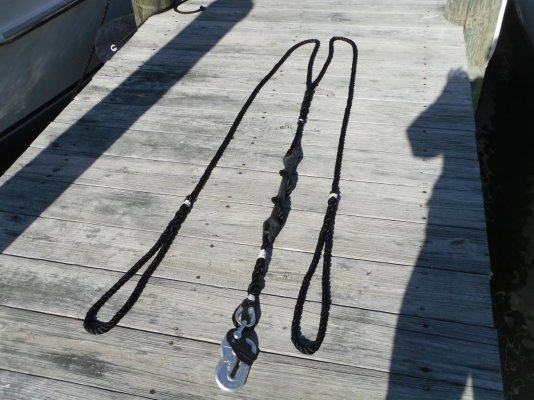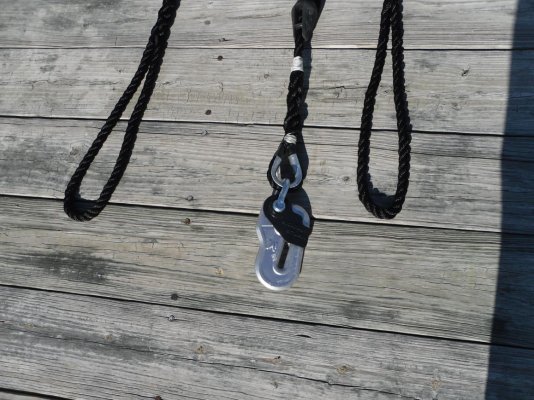I do not know why it rolls or twists.
I believe it is because something unsuported by anything solid--- which is what chain is when it is stretched out in suspension between two points either in the air or in the water--- will try to orient itself to be in balance.
A horizontal, or somewhat horizontal, length of chain is not in balance rotationally when every other link is vertical and the links in between are horizontal. It IS in ballance when all the links are sitting at about a 45 degree angle to the force of gravity. So suspended chain will want to rotate (twist) an eighth of a turn to put all the links at about 45 degrees to the pull of gravity. Add in the other gyrations that a long length of chain is subjected to when being used to pull things or lower things or drag things or whatever, and to me it's pretty easy to see why it ends up rotating around in various directions along its length.
I think this whole discussion of chain twist and swivels and such is massively theoretical. Outside of some really severe conditons, I don't think a swivel has any impact on what chain--- or rope for that matter--- does as a rode is being dragged around by a boat moving about its anchor. Whatever twists and rotations the rode might accumulate are going to come out the moment the anchor lifts free of the bottom and is hanging on the rode, swivel or no swivel.
The only real value I see in using a swivel is in helping the operator orient the anchor correctly to the pulpit roller if the anchor is either too heavy to manhandle into the correct orientation or is too far out of reach or both. But for a "normal" sized boat with a "normal" size anchor, Flywright's earlier descrption of how he deals with his anchor when it comes up is the most logical and simple approach, I think.
The self-orienting swivel that has been illustrated in this thread could probably be a help if one operates their windlass remotely from a helm or if it's not convenient to reach out and orient the anchor by hand from the foredeck. But again, the role the swivel is playing here is simply to orient the anchor for stowage.
As mentioned earlier, we installed a swivel between our all-chain rode and our Bruce anchor. Sometimes the anchor came up more or less oriented to the pulpit, sometimes not. When it didn't, it was an easy thing to re-orient it. Then a year or two later after talking to some of the more experienced anchorers in our boat club and reading Earl Hinz's book, we took the swivel out of the rode. And sometimes the anchor came up more or less oriented to the pulpit and sometimes not.
When we changed to a totally different kind of anchor but retained the same rode fastened to the anchor shank in the same way, guess what happened? Sometimes the anchor comes up more or less oriented to the pulpit and sometimes not.
If it isn't, correcting the orientation takes exactly 3.256984 seconds. So on our master list of Things to Worry About When Boating, rode twist and anchor orientation aren't on it.




